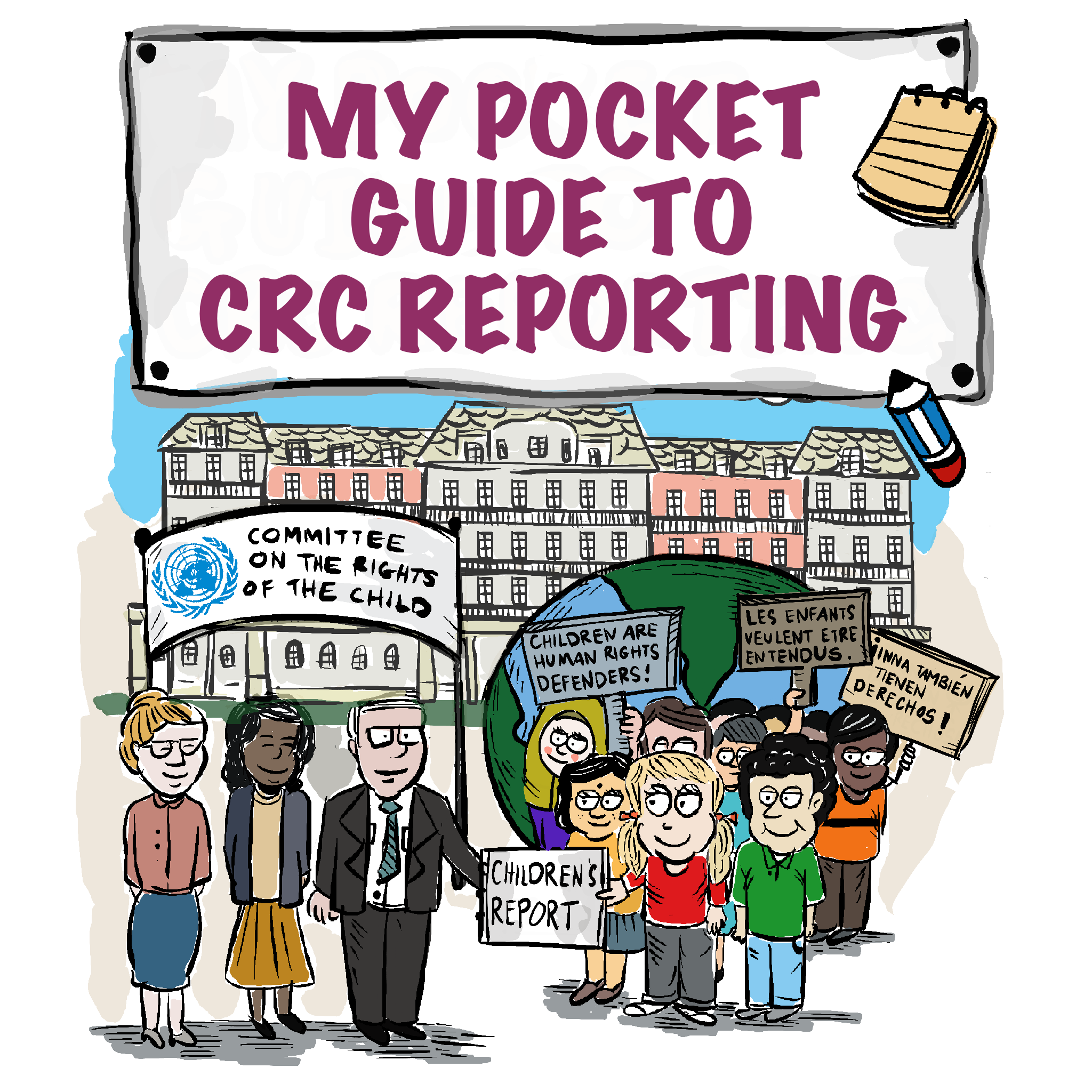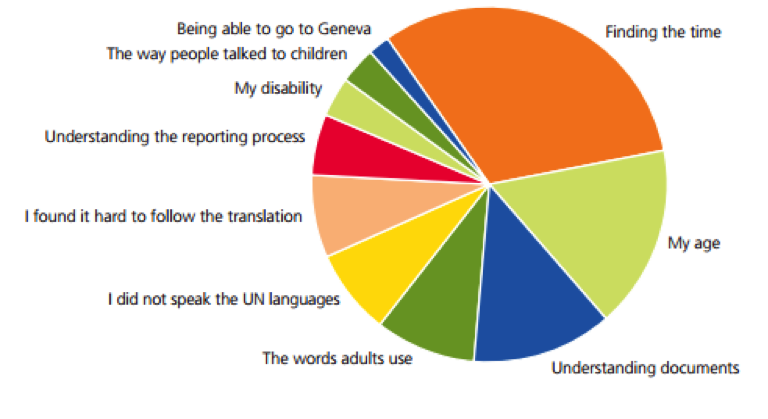Child Participation
Children can be children’s rights defenders when they are part of child-led organisations or groups, or act as children’s representatives.
The UN Committee on the Rights of the Child (the Committee) has indeed recognised children’s unique role and the relevance of their participation in all its areas of work, including the reporting cycle, general comments and days of general discussion.
Children can therefore engage in each step of the reporting cycle of the Committee, just like adults, provided that they – and the organisations supporting them, if relevant – follow the Committee’s working methods on child participation in the reporting cycle to ensure that their participation is done in an effective and meaningful way.

Check our case studies on children’s engagement in the CRC Reporting Cycle
- Moldova: Webcast – An Opportunity for Children to Engage in the Session: English, Français, Español
- Collection of Case studies from the first edition (2011) of My Pocket Guide: English, Français, Español
- Collection of Case studies from the first edition (2011) of Together with children: English, Français, Español
Frequently Asked Questions About Children’s Engagement and Participation in the Reporting Cycle of the Committee on the Rights of the Child
1. How can children engage and participate in the Committee’s reporting cycle?
The Committee has set 9 principles in its working methods to regulate the participation of children in its work. These principles must be respected and applied by the organisations supporting children or children themselves, when they are self-organised:
- Children must be informed about their rights and how their participation in the process will take place in an appropriate and transparent way.
- Children’s participation must be voluntary and children can cease their involvement at any stage.
- Children and their views must be treated with respect and children should be provided with opportunities to take initiatives.
- Children should draw on their knowledge, skills and abilities to express their views on relevant issues and given the space needed for them to highlight any issue they identify as being relevant.
- Adequate time and resources should be provided to children to ensure they can prepare well in an appropriate environment.
- All children without discrimination on any grounds should be able to participate and special measures should be taken to include very young children and children from marginalized communities.
- Children, as well as adults supporting children’s participation, need to prepare and be supported or trained to strengthen their skills relevant to the reporting cycle.
- Organisations facilitating child participation in the reporting process must have a clear child-protection policy in place for all the children who take part in activities related to this process. Adults have a responsibility towards the children with whom they work to guarantee that they are kept safe.
- Children must be informed about how their views will be interpreted and used.
Provided that each of these principles are respected, children can take part in each of the steps of the Committee’s reporting cycle. In fact, it is better for them to engage in the full cycle, instead of being only involved in one specific step. It makes their engagement more effective and meaningful and empowers them to become advocates for their own rights.
To know more about how children can engage in practical terms, click on each of the steps of the cycle.
2. My organisation works with children and would like to support them to engage in the reporting cycle. What should we keep in mind?
First of all, it is great that your organisation wants to support children you work with to engage in the reporting cycle!
To help you accompany children during the reporting cycle and beyond, we have produced the guides Together with Children (English, Español, Français), as well as My Pocket Guide to CRC reporting for children (English, Español, Français), which helps adults, children and teens understand what the CRC, the Committee and the reporting cycle are and how they can engage.
Based on best practices and lessons learnt of organisations who have supported children’s engagement in the reporting cycle, here are a few additional tips:
- Prepare yourself by reading carefully the Committee’s working methods on child participation in the reporting process, as well as the guides mentioned above.
- Check where your country is in the reporting cycle to develop your engagement strategy.
- Plan the activities to undertake based on country context to take into account possible challenges.
- Involve children in planning and designing the activities, let them be creative and take initiatives.
- Do not underestimate the need to provide information and training to the children on the Convention on the Rights, its Optional Protocols and children’s rights monitoring.
- Secure resources to ensure children can effectively engage in each step.
- Make sure you have a child protection policy in place for the activities.
- Don’t hesitate to contact us if you have any question!
3. Is there a maximum number of children who can engage in the reporting cycle?
No – there is no limit to the number of children who can engage in the reporting cycle as long as they are part of child-led organisations or groups, or act as children’s representatives, and that their engagement respects the Committee’s 9 principles.
In fact, it is particularly important that children who engage can represent all groups of children, especially children in marginalized and vulnerable situations, such as girls, young children, children affected by poverty, children in street situations, children in institutions, children with disabilities, refugee and displaced children, children in conflict with the law and children belonging to indigenous and minority groups.
4. What are the main obstacles to children’s engagement in the reporting cycle?
Children who have engaged in the reporting cycle have identified the following main obstacles and challenges:

- Working methods for the participation of children in the reporting process of the Committee on the Rights of the Child
- Working methods for the participation of children in the days of general discussion of the Committee on the Rights of the Child
- Committee on the Rights of the Child
Child safeguarding procedure - General comment No. 12 (2009) on the right of the child to be heard
- General comment No. 20 (2016) on the implementation of the rights of the child during adolescence
Child-friendly Convention on the Rights of the Child by Unicef-Child Rights Connect
A Guide for Adapting the Child-Friendly Example of the Convention on the Rights of the Child with and for Children in your Context was developed by Queens University Belfast Centre for Children’s Rights to equip adults to empower children to adapt the official text in their context and also serves as an excellent tool when translating any text into a child-friendly format.
